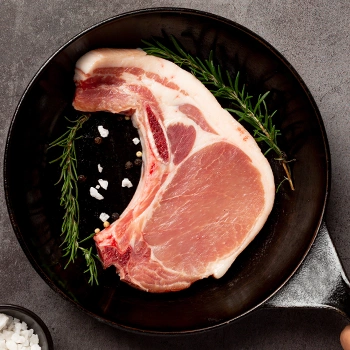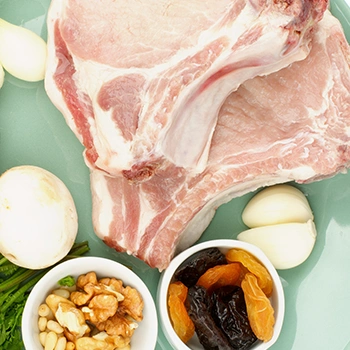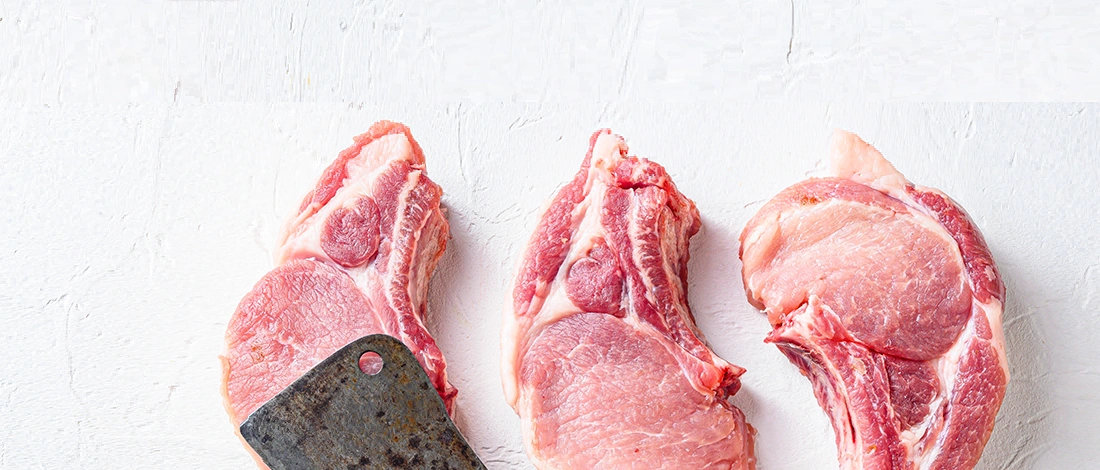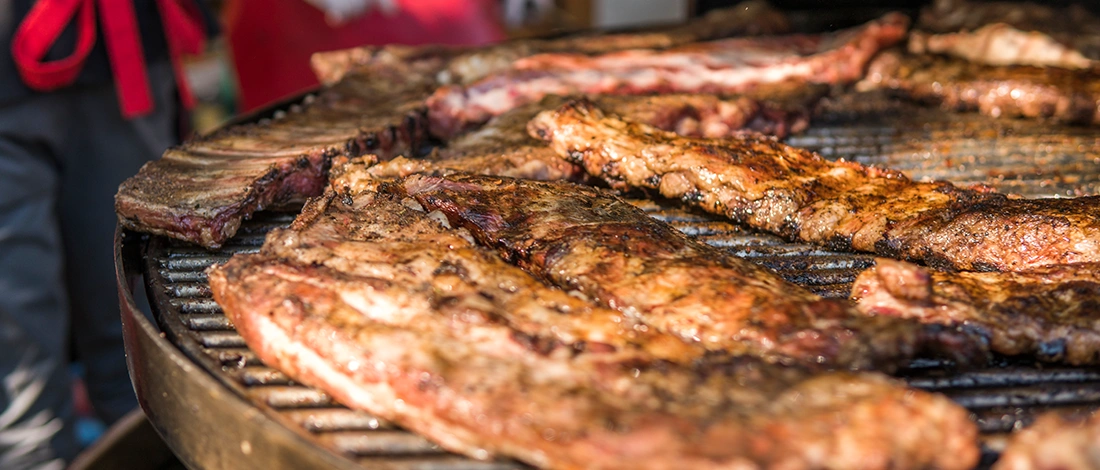Until only a few years ago, people believed that pork of any color except a greyish off-white was inedible, leading to all kinds of bacterial infections and diseases.
This is why many people still find pork unbearably tough, dry, and tasteless. But in 2011, the US Department of Agriculture changed its statement [1].
We set out to ask leading health experts if pork chops can be a little pink!
Quick Summary
- Pink pork chops are safe to eat if cooked to an internal temperature of 145°F and allowed to rest for 3 minutes after cooking.
- The pink color in well-done pork can be due to nitrates, fat content, added ingredients, pigments, and pH levels.
- Rare pork is not safe to eat; it needs to be cooked enough to kill harmful bacteria and parasites.
The findings published by the USDA caused great joy, especially for chefs.
Some people are still concerned about the safety of pink pork, and understandably so, since our parents and grandparents told most of us not to eat pork if it's pink.
It may take a few generations for us to get these concerns sorted, but many healthcare professionals and culinary experts claim to have known for years.
USDA Study Findings On Cooking Temperature For Pork

The study conducted by the fine scientists of the US Department of Agriculture specifies that there are different cooking temperatures for different pork meat products, all lower than previously estimated.
People previously believed that pork chops and other whole-meat pork products should be cooked to an internal temperature of 165°F (±74°C) to make them safe to eat.
This temperature makes the meat chewy, dry, and tasteless.
The study found that an internal temperature of 145°F (±63°C) is sufficient to kill all the bacteria and parasites while leaving the pork pink, juicy, and tasty.
The same rule does not apply to other pork products, though.
Ground pork products should be cooked to 160°F (±71°C) to be safe since the grinding process mixes air into the meat, potentially containing other bacteria and contaminants [2].
So if you decide to cook pork chops down to the bone, you can check out our recommended stainless steel grills.
Also Read: How to Tell if Pork Is Cooked?
What The Experts Say About Pink Pork

Chefs, in general, are rejoicing over the change, especially for ground meat--ground pork in particular. Robert Wieland, the executive chef at Poste Moderne Brasserie in Washington DC, says that he’s been cooking pork this way for years since trained chefs know that it’s safe and tastes better [3].
“I’m glad they have the sense to make that change,” says Weland, a sentiment shared by many of his peers.
But what about medical experts? What does science say about eating pink pork?
One of the primary concerns with raw pork is the presence of Trichinella, a parasite causing a disease known as trichinellosis.
This was a genuine concern in the past, but since then, the medical and agricultural sciences have made a few discoveries that virtually eliminated the presence of Trichinella in undercooked pork.
Those discoveries are:
- Trichinella is killed when pork is frozen, which means that most of the undercooked pork we consume is already safe from Trichinella by the time it reaches us.
- Trichinella can easily be killed at low temperatures, as low as 120°F (±49°C), much lower than the new recommended cooking temperature of pork [4].
The other concern with eating pink pork is E.coli, but science has long known that both beef and pork can be cooked well enough to kill E. coli completely without getting rid of the juice and pinkish color of the meat [5]. It means you can cook ground meat the way you want without worrying about possible infections.
So culinary experts and scientists agree that it’s not only safe to eat pinkish pork, but it’s much more satisfying as well!
Other Reasons Why Pork Chops May Be Pink

Cooking pork chops to medium rare is not the only reason why they may be pink.
Sometimes even a well-done piece of meat may have a pinkish sheen to it. This does not necessarily mean that it’s unsafe to eat.
Nitrates may cause a pink color in pork. This is especially the case with processed meats, but not exclusively.
Nitrates are often used in meat products to keep harmful bacteria from growing.
These nitrates bond with proteins and cause a slight pinkish color in the meat.
This is a good rather than a bad thing since it indicates the presence of the nitrates that control bacterial growth.
According to the butchers at Bringhurst Fine Meats and Catering in New Jersey, the pink color in meat can also be caused by fat content, added ingredients, pigments, and pH levels [6].
So if you happen to prefer your pork tenderloin well-done, having a little pink on it does not mean it's medium or medium-rare. Many other things could also cause the pink color.
Also Read: Graying Ground Beef
What Could Make Pink Pork Chops Unsafe To Eat?

The news that medium or medium-rare pork chops are safe to eat is excellent news for some of us.
This doesn't mean that we can forget all our previous ideas about pork.
As with any meat, treating pork chops wrong could still cause severe illness or food poisoning.
So how should we treat our pork, and how can we know if it’s unsafe for consumption?
First, even though medium or even medium-rare pork is okay, rare pork is not.
Barely cooking pork, leaving it more than a little pink on the inside, can still be dangerous since it does not kill all the harmful bacteria and parasites found in pork.
Secondly, incorrect freezing or refrigeration before eating undercooked pork can also be dangerous.
Pork chops can safely be refrigerated at 40°F or below for three to five days or frozen at 0oF or lower for four to twelve months maximum [7].
More prolonged refrigeration or freezing could mean that the decomposition of the meat has reached the point where eating it could be harmful to humans.
How Can We Know If Pork Chops Are Safe To Eat?

There are a few indications that pork chops may be off.
Some of these indications are easy to see, but others may be less clear to untrained eyes and noses. It's important to know these before eating undercooked pork.
- Raw pork should have a slight pinkish-gray, pale color. If the color looks off, pick something else for dinner instead.
- Raw pork should be moist but not slimy. If there's a slimy coating on the outside of your pork chops, it indicates decomposition and bacterial presence.
- A sour odor also indicates that pork is going off. This odor will intensify over time. If they smell even a little bit sour, rather chuck the pork chops out. Some people will leave them in vinegar at this point and cook them, but this is not proven to be safe.
- Cooked pork may be refrigerated for three to five days. If it’s been more than three days, check it carefully. If it’s more than five days, or if there’s a strong smell or mold growth, don’t risk it – just throw the pork out [8].
Related Articles:








